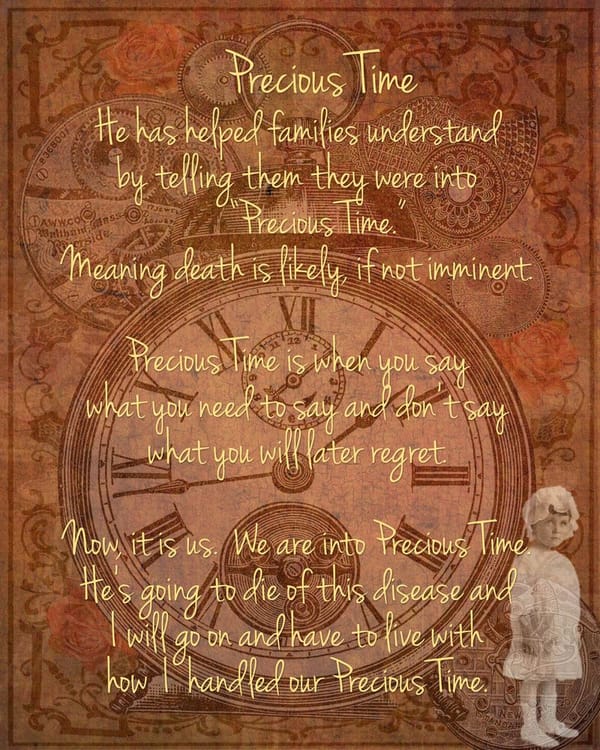Vascular Parkinsonism: A Clinical Overview for Palliative Healthcare Providers

Introduction
Parkinsonism, defined by bradykinesia, rigidity, resting tremor, and postural instability, is most commonly attributed to idiopathic Parkinson’s disease (PD). However, not all patients with parkinsonian features have classic PD. A notable subset, particularly among older adults with vascular risk factors, develops parkinsonism due to cerebrovascular disease. This condition, termed vascular parkinsonism (VP), is clinically significant yet frequently underdiagnosed. For palliative care providers, understanding VP is crucial, as its trajectory, management, and prognosis diverge from idiopathic PD.
Epidemiology
Vascular parkinsonism accounts for an estimated 3–6% of all parkinsonian syndromes, though this may be an underrepresentation due to clinical overlap with other neurodegenerative disorders. It typically presents in patients over the age of 70, especially those with a history of hypertension, diabetes, atrial fibrillation, or cerebrovascular accidents.
Pathophysiology
The pathophysiology is distinctly different from idiopathic PD. While PD stems from degeneration of dopaminergic neurons in the substantia nigra, VP results from ischemic changes in critical brain regions such as the basal ganglia, thalamus, and subcortical white matter. Lacunar infarcts and diffuse leukoaraiosis disrupt motor circuitry, particularly the cortico-basal ganglia-thalamo-cortical loop, leading to parkinsonian symptoms without true dopaminergic neuron loss.
Clinical Features
Clinically, VP often differs in presentation. The hallmark symptom is gait disturbance—broad-based, slow, and shuffling, frequently described as “magnetic.” Unlike idiopathic PD, tremors are usually absent or minimal, and symptom onset tends to be symmetric. Bradykinesia and rigidity predominantly affect the lower limbs, and postural instability with frequent early falls is common. Cognitive impairment is also more prominent, often manifesting as executive dysfunction or vascular dementia. Additional non-motor features include pseudobulbar affect, dysarthria, and urinary urgency or incontinence. The course may be abrupt or stepwise, particularly when associated with acute vascular events, but can also follow an insidious decline in chronic small vessel disease.
Diagnostic Approach
Diagnosis hinges on careful clinical evaluation, particularly in patients over 70 with cardiovascular disease, poor levodopa response, and predominant lower body symptoms. Brain MRI is essential, typically revealing periventricular white matter changes, basal ganglia infarcts, or cerebral microbleeds. While DaTscan imaging can help differentiate VP from idiopathic PD by demonstrating relatively preserved dopaminergic uptake, it is not always necessary. The diagnostic framework proposed by Zijlmans and colleagues emphasizes the presence of parkinsonism, cerebrovascular lesions on imaging, temporal association with vascular events, and exclusion of other parkinsonian syndromes.
Management
Management of VP is predominantly supportive. Unlike idiopathic PD, dopaminergic medications such as levodopa often offer limited benefit, though a short therapeutic trial may be worthwhile. Cholinesterase inhibitors may aid cognitive symptoms, and antidepressants can help address mood disturbances or pseudobulbar affect. There is typically no role for dopamine agonists or MAO-B inhibitors due to limited efficacy and increased risk of side effects in the elderly. Controlling vascular risk factors remains paramount. Antiplatelet agents, statins, and antihypertensives should be used judiciously, with care taken to avoid excessive blood pressure lowering that could compromise cerebral perfusion. Rehabilitation plays a vital role. Physical therapy aimed at gait training, fall prevention, and mobility preservation can help maintain function. Occupational therapy supports safe home environments, and speech therapy may be required for dysarthria or dysphagia. Cognitive support, caregiver education, and environmental modifications are equally critical.
Prognosis
Unfortunately, the prognosis for VP is generally less favorable than for idiopathic PD. The limited response to medications, combined with a high burden of comorbidities, often leads to rapid functional and cognitive decline. Patients may experience frequent cerebrovascular insults and transitions to full-time care, particularly as fall risk and cognitive issues escalate.
Differential Diagnosis
Differentiating VP from other causes of parkinsonism is essential. Idiopathic PD tends to begin asymmetrically with prominent tremor and usually responds well to levodopa. Normal pressure hydrocephalus presents with the classic triad of urinary incontinence, gait instability, and dementia, along with ventriculomegaly on imaging. Progressive supranuclear palsy and multiple system atrophy have distinctive early signs like gaze palsies or autonomic dysfunction, and drug-induced parkinsonism should always be considered in patients on neuroleptics or antiemetics.
Why Vascular Parkinsonism Matters in Hospice and Palliative Care
In palliative and hospice care, identifying vascular parkinsonism has several important implications. First, it is frequently overlooked, especially in frail elderly patients with multi-morbidity. Symptoms such as gait instability, falls, and cognitive decline may be misattributed to dementia or aging. Recognizing VP helps clarify the underlying process and can inform prognosis and care planning. The clinical trajectory in VP often involves rapid and irreversible decline in function, particularly in lower body mobility. Early falls, postural instability, and gait freezing often result in dependency, repeated hospitalizations, and early institutionalization. This natural course necessitates timely anticipatory planning, including consideration of hospice eligibility when appropriate.
Limited Treatment Options Align with Palliative Principles
The therapeutic approach in VP, centered on fall prevention, symptom control, and maximizing remaining function, aligns naturally with palliative principles. Since most patients gain little from traditional dopaminergic medications and no disease-modifying therapies exist, the focus is on quality of life rather than curative intent. Importantly, many patients with VP also suffer from vascular dementia. They may exhibit executive dysfunction, emotional lability, poor insight, or behavioral changes that require both pharmacologic and non-pharmacologic interventions. Palliative professionals are well equipped to support caregivers, implement behavior management strategies, and use medications such as SSRIs or mood stabilizers when indicated.
Goals of Care Discussions Are Critical
Goals-of-care conversations are especially critical in VP. Given the often-poor prognosis, limited treatment options, and progressive disability, patients and families benefit from early, honest discussions around expectations, care preferences, and the potential role of hospice. Patients with VP frequently experience recurrent infections, aspiration events, or hospitalizations due to falls—events that diminish quality of life and signal a shift toward comfort-focused care.
It’s Underdiagnosed, but Common in Frail Older Adults
Finally, accurately diagnosing VP prevents futile interventions. Recognizing it allows clinicians to avoid unnecessary referrals, imaging, or medication trials that are unlikely to provide benefit and may cause harm. Understanding that a patient’s symptoms stem from vascular parkinsonism rather than idiopathic PD or normal pressure hydrocephalus helps redirect the plan of care toward what matters most: dignity, safety, and comfort.
Distinguishing VP from Other Parkinsonian Syndromes Prevents Futile Interventions
For palliative care professionals, being able to identify the telltale signs of vascular parkinsonism—symmetrical bradykinesia, gait dysfunction, early falls, and cognitive changes in the setting of cerebrovascular disease—is vital. It allows for more accurate prognostication, reduces the burden of unnecessary diagnostics, and ensures that care is aligned with patient-centered goals. When such a presentation arises in a frail, elderly patient, it is often a cue to shift the conversation toward anticipatory guidance and end-of-life planning. In the world of palliative care, this knowledge is not just academic—it can be transformative.
"Acceptance doesn’t mean resignation; it means understanding that something is what it is and that there’s got to be a way through it." - Micheal J Fox (living with Parkinson Disease since 1991)
References:
- Bloem BR, Darweesh SKL, Meinders MJ. Palliative Programs for Persons With Parkinsonism—The Next Frontier. JAMA Neurol. 2020;77(5):548–550. doi:10.1001/jamaneurol.2019.4697
- Nataliya Titova, K. Ray Chaudhuri. Chapter Forty-Four - Palliative Care and Nonmotor Symptoms in Parkinson's Disease and Parkinsonism. Editor(s): K. Ray Chaudhuri, Nataliya Titova, International Review of Neurobiology, Academic Press, Volume 134, 2017, Pages 1239-1255.
- Janis M. Miyasaki, J. Long, D. Mancini, E. Moro, S.H. Fox, A.E. Lang, C. Marras, R. Chen, A. Strafella, R. Arshinoff, R. Ghoche, J. Hui, Palliative care for advanced Parkinson disease: An interdisciplinary clinic and new scale, the ESAS-PD, Parkinsonism & Related Disorders, Volume 18, Supplement 3, 2012, Pages S6-S9
- Jan CM Zijlmans et al. Clinicopathological investigation of vascular parkinsonism, including clinical criteria for diagnosis. Movement Disorders. Mar16 16, 2004. Volume 19(6): 630-640.
- Jan CM Zijlmans. The Role of Imaging in the Diagnosis of Vascular Parkinsonism. Neuroimaging Clinics, Volume 20, Issue 1, 69-76.





